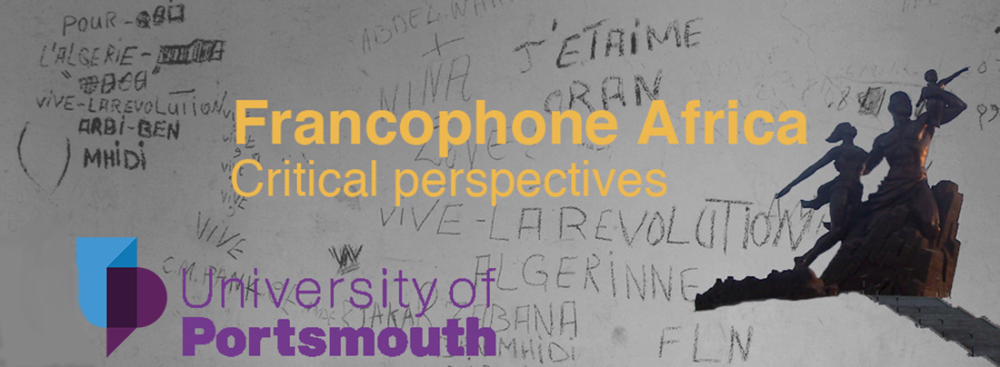In this post, Kelsey Suggitt reviews the public lecture given by Patrick Altes to mark the opening of his art exhibition, ‘A Story of Revolutions’, at the University of Portsmouth’s Space Gallery.
On Tuesday 28 October 2014, students and staff from the University of Portsmouth gathered to hear Patrick Altes’ thoughts on his art exhibition, ‘A Story of Revolutions’, which opened at the Space Gallery (Eldon Building, University of Portsmouth) on Monday 20 October. As previous blog posts have discussed, Patrick was an Artist in Residence at the University of Portsmouth, courtesy of the Leverhulme Trust, and worked with Dr Natalya Vince from the School of Languages and Area Studies. Here he was able to generate ideas and gather research for an art collection that would explore the complex question of identity in post-colonial Algeria.
Patrick’s talk opened with a very brief history of the French in Algeria, but he particularly focussed on questions of citizenship and identity, themes his exhibition seeks to address. On this basis of this, Patrick explained his initial thoughts on his project, for which he felt the need to think about identity, and as an artist, how to use creativity to express it. He has long perceived himself as being stuck between two cultures, not feeling entirely French because of his Spanish origins, but not quite Algerian since he left his birth country at a very young age. From these reflections, Patrick was able to recognise the importance of land and origin, and their impact on identity and one’s sense of history. Furthermore, he contemplated associated images and the importance of symbols, such as soil and sky, religion and even liberation. He also perceived an ‘awakening’, in the sense that colonisation could be looked at in real terms, and removed from the mythology and nostalgia which often surrounds it.
As part of his residency, Patrick returned to Algeria, for the first time since he first left as a child, to conduct research. It was at this time that he began to experiment with various mediums, including photography. Patrick uses individual methods within his work, with a combination of paint and drawings, and also mixed media. This is a medium he has found particularly frustrating to work with, yet it has produced fascinating results. It was also during his time spent in Algeria that Patrick became aware of the importance of avoiding nostalgia, seeking instead to use various mediums in order to reflect the interconnections between the past and present. An example of this is the way in which he uses photographs supplied by Europeans from Algeria in order to interpret their role in the narrative. In his work, he endeavours to present a lost generation, something he feels a part of and thus reflects throughout his work.
During his talk, Patrick stated that the reality today is that few in Europe have a completely distinct national identity. Many people can trace links to other countries and ethnicities. Furthermore, he argued that places, like people, are not homogeneous.
His work also portrays other themes, such as exoticism and the notion of the other, as presented by Edward Said[1]. In order to depict these ideas, he uses representations of the colonial exhibition. He also engages with the theme of fragmentation and the idea that the French state has a tendency to ignore fragile situations, something that has been highlighted in popular culture in France with the film La Haine[2], yet continues to be prominent in French society.
Patrick’s work makes particular use of symbolism, using pre-colonial symbols such as ancient languages throughout his work. Colour is also used for symbolic purposes, with bright colours, black and white used to express various emotions and times. In addition, Patrick’s work addresses how some symbols have had their meanings altered over time, such as certain gardens, which were once viewed as colonial and oppressive, but later became symbols of liberation.
Through this collection, Patrick attempts to move away from the prevalent idea of two narratives, seeking instead a subtler interconnected history of identity in France and Algeria.
Patrick Altes ended his public talk with questions from the audience, giving him the opportunity to discuss his collection in more depth, as well as his artistic influences that include, amongst others, Anslem Kiefer, Pablo Picasso and Henri Matisse.
Patrick Altes’s exhibition continues as part of the Being Human festival, weekdays in Eldon building until 26 November 2014. There is also a meet the artist event on the 14th November.
[1] Said, E. (1978). Orientalism. London: Penguin.
[2] Kassovitz, M. (Director). (1995). La Haine [Motion Picture][DVD]. France: Tartan. (1996)
